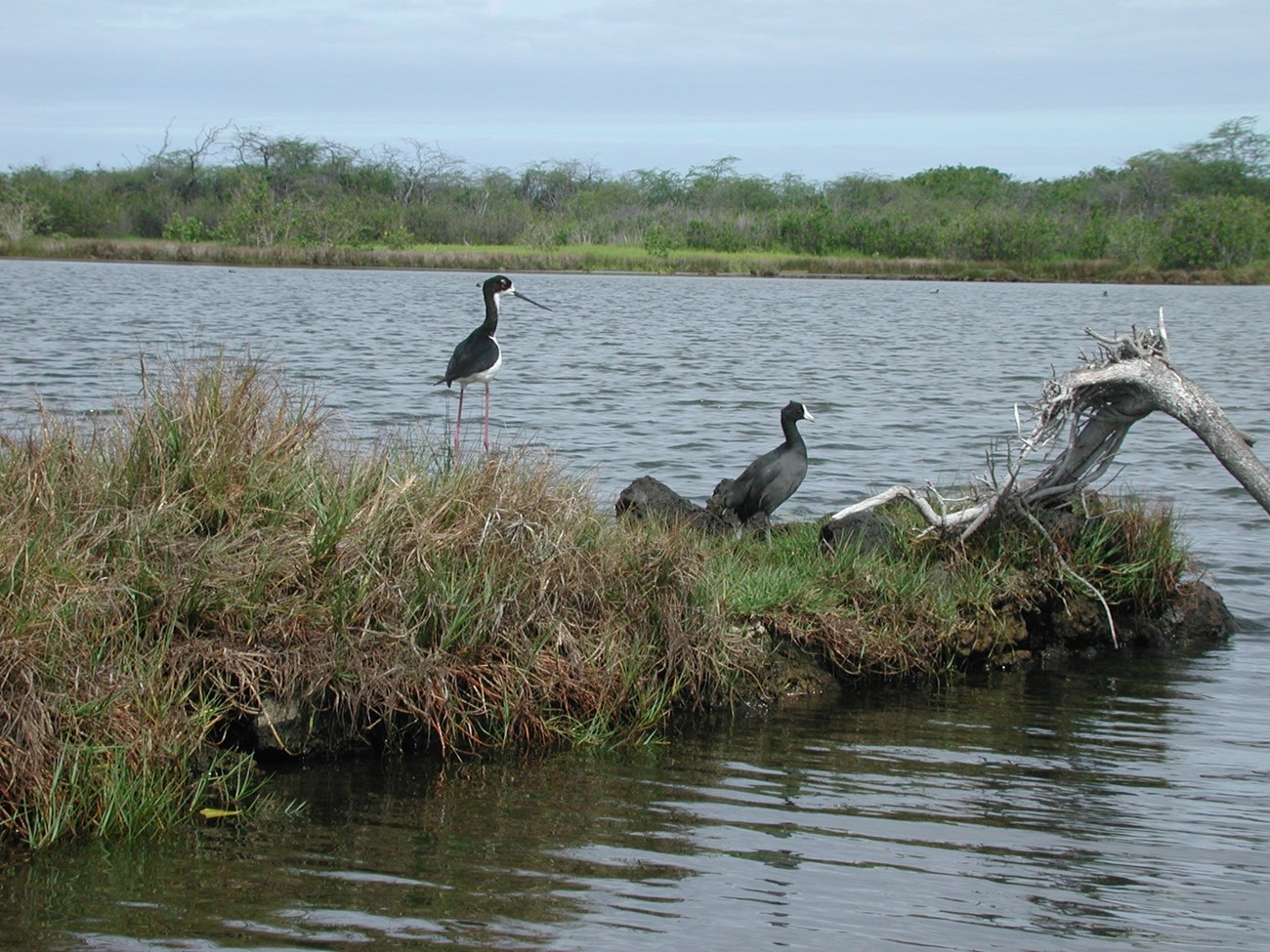Article
Bird Beak Buffet

NPS Photo
Introduction
In this activity, you will learn about birds, the importance of beak shape and size, and what type of food they eat. If you are doing this at home, you might get to know some of the birds that live in your backyard!
Materials (for each player)
- 1 of each of the following (to represent beaks):
- Soup spoon
- Tweezers
- Pair of chopsticks
- NOTE: You can also use clothespins, popsicle sticks, tongue depressors, tongs, plastic forks, tea strainers and ice cream scoops
- 10 of each of the following (to represent food items):
- Pennies (clams)
- Rice grains (small insects)
- Rubber bands (worms)
- Pasta shells (beetles)
- NOTE: You can also use washers, marbles, toothpicks, and various pastas
- 1 plastic cup, to represent a stomach
- 1 piece of paper and a pen/pencil to record your observations
- A clock or timer
- OPTIONAL: Pictures of different birds and bird beaks, bird books and field guides
Getting Started
Ask yourself a few questions before starting:
-
Have you ever seen birds eating?
-
What do you think the birds were eating?
-
What foods do you like to eat and how do you eat them?
-
What do birds use to help them eat?
- Do you think birds compete with each other for food? How would you know?
Activity Instructions
- Grab a beak (choose just one to start with) and a stomach (cup)
-
Find a flat spot on the floor or table and scatter your food items
-
If you are playing with more than one person, someone says “Time to eat!” and everyone starts collecting food items and putting them in their cup-stomachs.
-
The only way to pick up food is with your beak - no hands, no scooping with cup-stomachs, and no stealing from other players!
-
After 20 seconds, someone says “Stop!” and everyone stops feeding and records the type of bill they were using and the number of food items of each type that are in their stomachs.
-
Repeat the activity using different beak types, and using one type of food at a time or all food types at the same time. Record your information after each round.
Some Things to Think About
-
Did different beak types influence what type of food you could eat? Why?
-
Was it easier to get food when only one item was available, or when all items were available?
-
Did all of the birds get enough to eat?
-
If you were playing with more than one person, were you competing for food?
-
Did one beak work better than another?
-
What else can you say about your results?
-
Look at your bird pictures and see if you can see which birds might have beaks like your beaks. Some local birds in Hawaii that you may see with bills like these:
Hawaiian Bird Beaks Utensil Hawaiian Bird Photo Soup Spoon Koloa Mōhā
(Northern Shoveler)Tweezers ʻŪlili
(Wandering Tattler)Chopsticks Aeʻo
(Hawaiian Stilt)
-
- What birds might have these other beak types: clothespins, popsicle sticks, tongue depressors, tongs, plastic forks, tea strainers and ice cream scoops?
What's Next?
More Beaks!
| ʻIʻiwi | |
| ʻApapane |
- Look at the pictures of the ʻIʻiwi and ʻApapane above and observe the bill shape
- What and how do these birds eat? Hint: They are in the honeycreeper family!
- Grab a straw (no plastic please – save our honu!) and 3-4 cups with just a bit of water in each
- Place the cups of water at different locations in your house or backyard and “fly” from place to place to feed
- Things to think about:
- What did the cups of water symbolize?
- Did you run out of food?
- In a natural environment, how would these birds find enough food?
- The honeycreeper family contains many species with different bill shapes and sizes. Why would such closely related birds have different bill shapes/sizes?
Backyard Bird Observations
Take a walk in your backyard and find some birds!
- Observe their beaks and their behavior (note: you will see more if you are quiet!)
- Guess what type of food they eat depending on their beak shape/structure and their behavior. Are they choosing certain food types?
- Try to see if they are competing with other birds for food
- Think about what might happen if your backyard habitat changed - if new plants, animals, or structures were introduced. Would the available food sources change? Would the birds stay?
Build-Your-Own-Beak
What other bird beaks can you design? What type of food would you eat depending on the beak size and shape?
Be sure to check out bird beaks in all kinds of different habitats that you may visit!
Notes
Photos by NPS and Jack Jeffrey, Hawaiʻi Volcanoes National Park
Activity adapted from MARE. Lawrence Hall of Science, University of California, Berkeley.
